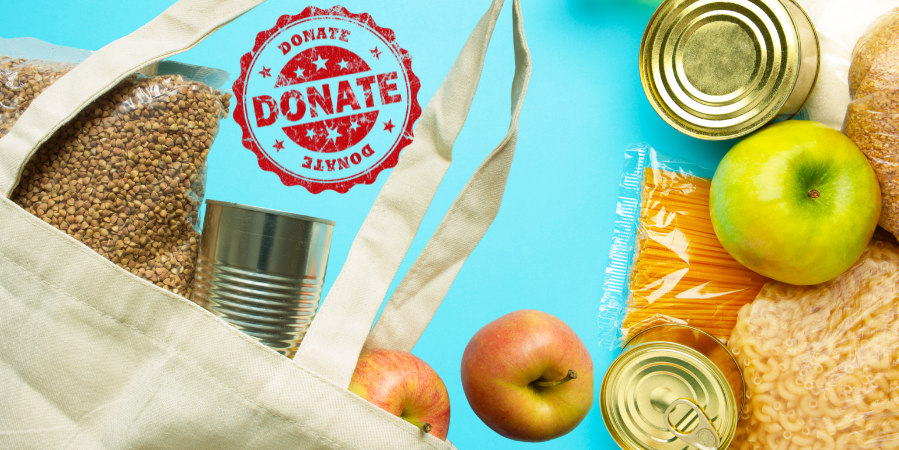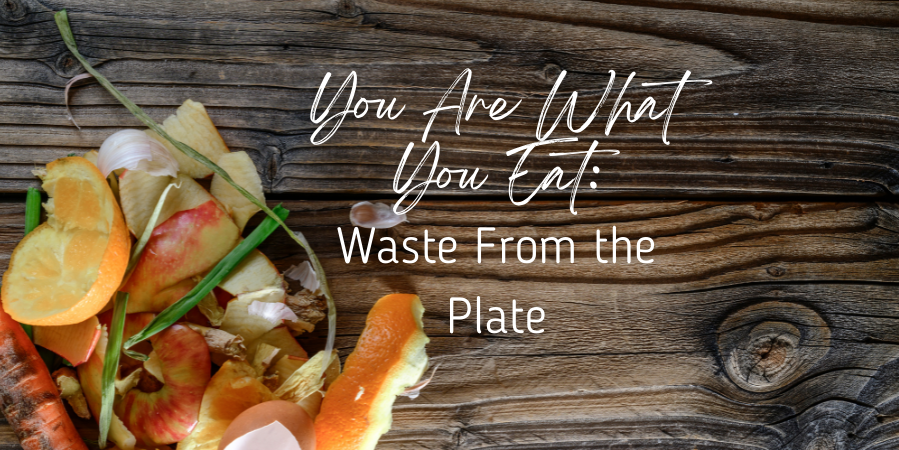It’s not a secret that food waste in America is a problem - We have the (dis)honor of being the country with most food waste generated in the world. Despite the millions of food insecure families across the country, there is still a massive amount of food thrown into landfills every year.
Why do we throw out so much food? Is it all spoiled, or is something else going on?
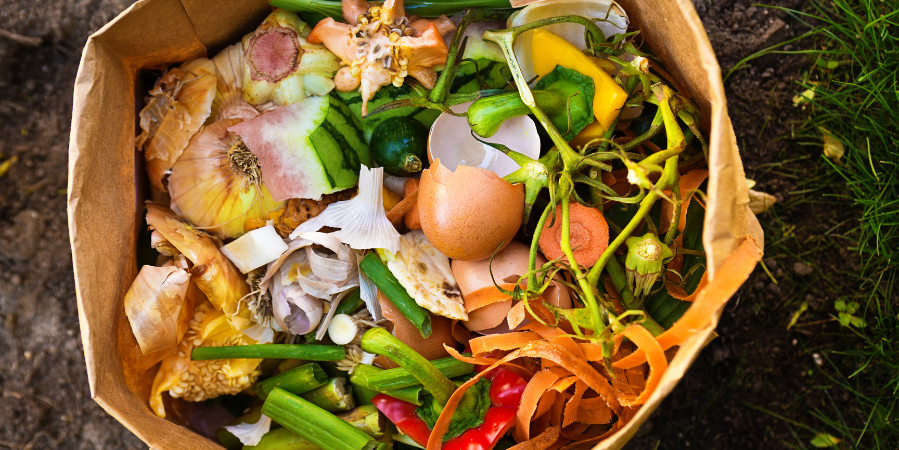
America Wastes 40% of All the Food it Produces
As the world became more aware of global warming, the U.S. got pretty good at keeping paper out of landfills, but we still almost universally dump our uneaten food there. According to the EPA, recycling rates in 2018 were about:
- 68.2% of Paper and paperboard was recycled (46.0 million tons),
- up from 42.8 percent in 2000 (EPA, a., 2020.).
- 63% of Yard trimmings were composted (22.3 million tons),
- Down from 69.4 % (24.4 million tons) in 2017 (EPA, a., 2020.).
- Only 4.1% of Food and other municipal solid waste (MSW) organics composted (2.6 million tons).
- This is actually less than what was composted in 2017 (6.3%). The remaining amount of food waste ends up in landfills (EPA, a., 2020.).
Most of the waste can be attributed to a massive overproduction of food that uses excess greenhouse gas producing energy. This hits us all right in the pocketbooks - over $218 billion/year is spent making uneaten food that ends up as 24% of all domestic solid waste sent to landfills rather than the plates of the hungry, or to composts (something to talk about in Part 3) (EPA, 2021.).
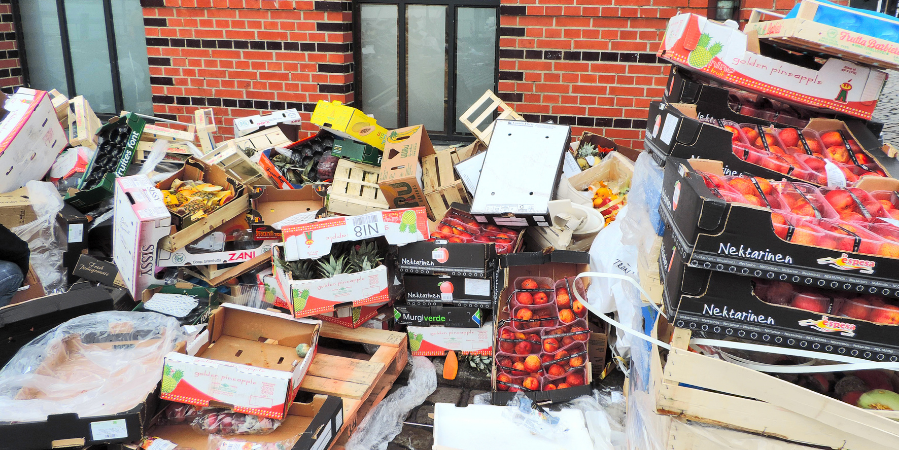
Where the Food Gets Lost: Retail and Consumer Wastage
Of the 40% of food going to waste, 50% of that waste is on us- the consumers. Added to the retail stage, this accounts for up to 75% of all food waste (Jaglo, 2021.).
Obviously, some of this food loss is inevitable, like spoilage, and can occur at every stage of the food supply chain, from production to consumption. As an example, food preparation processes (like drying, milling, transporting, or processing) inadvertently expose food to bugs, vermin, birds, molds/fungus, and bacteria (USDA, b., n.d.). But there is also food waste due to preventable causes like mishaps with cold storage, over-ordering, and trashing visually imperfect produce at the grocery store, or when people buy and/or cook more than they need and throw out the leftovers (USDA, b., n.d.). Food loss due to spoilage is often preventable by only buying and cooking the necessary amount of food, and practicing proper storage practices.
In fact, spoilage alone cannot account for the mass amount of food thrown away. According to studies, only 10% of all food thrown out prior to purchase by consumers is inedible (meaning spoiled, or parts of food not typically eaten like onion papers, produce peels, bones, shells, etc.) and in our homes, only 30% of the food we throw out is inedible (Jaglo, 2021.).
So what are we throwing out so much? Studies have shown that of all the food people in the US throw out at all levels of the food supply chain:
• 40% were Fruits and Vegetables
• 23%-28% Prepared Foods/Leftovers
• 3-7% Dairy and Eggs
• 6% Meat and Fish
Dairy, eggs, meat and fish waste might be lower since this is often included as prepared food/leftovers (Jaglo, 2021.).
As a society, we have a deep seated fear of getting sick from spoiled food which explains why many people toss anything past date. But does that date stamped your food packaging mean that food is suddenly inedible past a certain day?
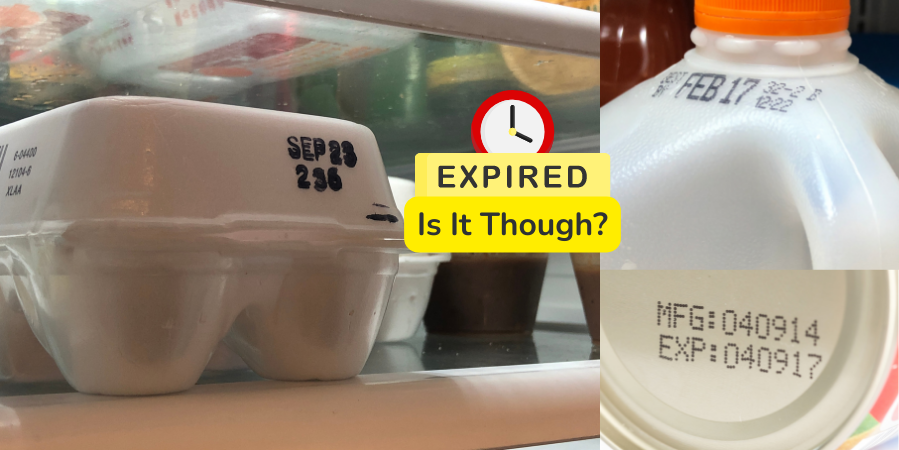
It’s a (Food) Date, But Not How You Think It Is
First of all, lets just get it out there that food dating is not an indicator of safety or edibility.
Except for baby formula, there is no set federal standards or regulations on food dating at all. Many states have their own regulations for food dating for safety purposes, like dates on milk, eggs, etc., but this is sporadic and highly variable between states (Broad Lieb, 2013.).
Food dating is most often meant for manufacturers to communicate to retailers for stock control purposes – not consumers. These dates are selected by the manufacturer, and do not have any significant correlation to edibility, or safety against microbial contamination of your food. However, as many as 54% of people surveyed believe that eating food past its sell-by/use-by date constituted a health risk (Broad Lieb, 2013.).
Even in 1979, when open dating of food was beginning to gain traction among the public, the Office of Technology Assessment (OTA) (a U.S. Congressional office from 1972 to 1995) concluded that there was “little to no benefit gained from using an open dating system in terms of improved microbiological safety of foods” (Broad Lieb, 2013.). Safety hazards for food are more often due to processing failures, contamination, and damage from storage and handling.
Many consumers don’t understand that the amount of time food spends in the danger zone temperature wise (40°F to 120°F) is a much more important factor in determining food safety than how much time was spent in storage in total (Broad Lieb, 2013.). The USDA and FDA’s Center for Food Safety and Applied Nutrition (CFSAN) have also affirmed that:
- as long as food is kept at 40°F or below, the food should still be “safe, wholesome and of good quality even if the date expires during home storage”, and that
- perishable products that have been frozen are safe indefinitely as long as they are continuously kept frozen, even if the date has expired (Broad Lieb, 2013.).
Besides contributing to unnecessary food waste, open date labels can give consumers a false sense of security about the safety of their food. Sometimes food can spoil even if the product is numerically within the date marked by the manufacturer. A 2011 UK government report noted that the misplaced confidence in ‘use by’ dated products increased the risk of consumers consuming food that could be contaminated, spoiled, or otherwise rendered inedible (Broad Lieb, 2013.).
A better way to convey food safety information to consumers is through smart labels, or Time-Temperature Integrators (TTI) (Broad Lieb, 2013.). These are small tags attached to food items that change color according to the duration of temperature fluctuations. Along with a date, there is a an associated color coding on the tag to indicate the continuity of cold chain transport and general shelf life of the product. For example tags could read, “Use by MM-DD-YY unless tag turns grey” so people know when food is most likely spoiled even if the date is not expired (Broad Lieb, 2013.). A study published in 2020 tested the effectiveness of TTI tags in a national poultry line and found it to be very accurate in reflecting fluctuations in temperature through the supply chain, and accurate in predicting the remaining shelf life of the meat which was consistent with the expected timeframe for onset of microbial contamination (Albrecht, 2020.).
Nothing really beats common sense and human senses of taste, sight, and smell when trying to determine if food is fit for eating. A lot of time, common sense and little bit of knowledge go a long way in helping us waste less food in the future. And we’re going to need to do that quickly.
The Impacts of Hunger in America
The UN projects that the rising world population will require 50% more food produced in 2050 than that made in 2010 (Jaglo, 2021.). Its unrealistic to imagine that we can achieve this by clearing more land for more open field farms because that would contribute to deforestation, biodiversity loss, more greenhouse gas emissions, water pollution, and water scarcity (Jaglo, 2021.). Reducing and redirecting food waste is one of our best, and most achievable ways to feed more people, while reducing the need for new food production space simultaneously.
Feeding America has reported that many families who cannot afford food, and may not be eligible to receive food stamps, often alter their eating habits in order to afford non-food costs like medications, rent, water, utility bills, and transportation costs (To, 2019.). In one study, 24% cut back on eating in order to afford basic household goods like toothpaste, laundry detergent, diapers, or shampoo (To, 2019.).
The longterm health effects of food insecurity on pregnant mothers and children include:
• Higher risk of birth defects, oral, and mental health problems for mothers-to-be
• Poorer physical health outcomes like:
-
- Chronic illnesses
- Oral health problems
- Higher risk of asthma
- Stomachaches
- Headaches
- Iron deficiencies
- Mental health impacts on children like:
- Behavioral troubles
- More visits to a psychologist
- Impaired intellectual development (To, 2019.).
Food-insecure adults are also more likely to have long-term physical health problems, depression, and advanced forms of chronic disease (To, 2019.). All of this increases health care costs, hospitalizations, job instability, and leads to an overall lower quality of life (To, 2019.).
There are more than 38 million people in our country, 12 million of which are children, that are food insecure (Feeding America, 2022.). Despite our image of rural farmlands, poverty and issues with hunger tend to be worse in these communities, with 86% of counties with the highest proportions of children at risk for food insecurity being rural. Additionally, black people living in rural counties were found to have a 2.5x higher risk of hunger compared to their white, non-hispanic counterparts. Native Americans in rural areas also experience some of the highest rates of hunger overall compared to all other racial and ethnic groups. Increasing access to nutritious foods is a health equity issue that needs a multi-pronged approach, and one major way to close the gap is to divert edible food that would have otherwise been discarded to needy communities (To, 2019.).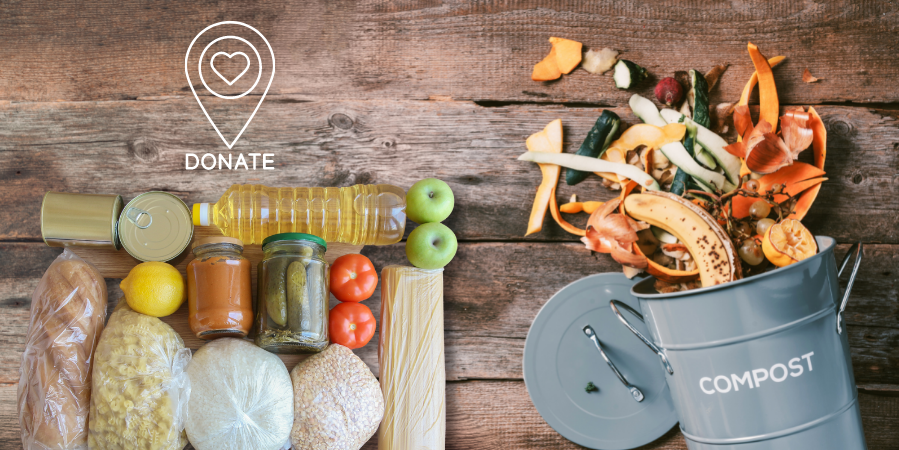
What Can We Do?
To reduce the amount of food you waste, and reduce your carbon-footprint on an individual level, try:
- Reducing the amount of food you buy and curbing overeating, especially when you dine out.
- Pack your leftovers to eat later, or share with others, instead of throwing them out.
- Clear out excess food from the pantry and donate to your local food bank.
- Volunteer to transport discarded food from grocery stores to food banks.
- Keep your fresh produce and leftovers out of the danger zone (40°F to 120°F).
- Make sure frozen foods are kept frozen until you’re ready to eat it.
- Stop and think before blindly throwing out food that is past its date.
You can also write you congressmen to implement:
1. Stronger and More Comprehensive Liability Protections
Many individuals, grocers, and farmers fear that donating food that is close to or past its expiration date is a health risk and that they will held liable for any resulting illness. However, the Bill Emerson Good Samaritan Act is a federal law that protects donors and recovery organizations from criminal and civil liability due to issues of age, packaging or condition of their donated food (Schultz, 2017.). Additionally, every state has their own liability laws which often include greater protections. For example (Schultz, 2017.):
-
- 18 states protect food banks that charge fees to recipients.
- Arizona, California, Louisiana, Massachusetts, Minnesota, New Hampshire, New Mexico and Vermont protect donations given directly to people in need.
- California, Nevada and Oregon protect donations whether they comply with labeling requirements or not.
- California and Massachusetts protect the donation of food past its expiration date.
2. Organic Waste Bans
These laws prevent organizations and businesses that generate large amounts of food waste, like restaurants and hotels, from sending it to landfills. Instead, these food waste generators must reduce output through prevention of waste creation and better handling of unavoidable waste – either through donation, composting, or anaerobic digestion (converting food waste into biogas) (Schultz, 2017.).
i. This has already been implemented in other hotels around the world. The Grand Hyatt in Singapore saves $100,000 a year by transferring its vegetable, poultry, bones, egg shell, tissue paper and fruit peels from nine in-house restaurants and kitchens into a Biomax Thermophilic Digester which can recycle the waste into compost in 24 hours (Tan, 2017.).
Some states that have already implemented these bans are California, Connecticut, Massachusetts, Rhode Island and Vermont (Schultz, 2017.). Maryland lawmakers also approved a study that looks into methods of improving composting infrastructure (Schultz, 2017.).
3. Standardize Food Dating Systems into a Uniform Set of Regulations for all Food Items
-
-
- Make Sell-By Dates invisible to consumers – these are strictly meant to convey stock control information to retailers, and doesn’t provide useful information to consumers but can still cause confusion (Broad Lieb, 2013.).
- Remove open date labels from shelf-stable, non-perishable food products
- Put Freeze-By dates on applicable products (Broad Lieb, 2013.).
- Use clear, standard language on packaging labels addressing health concerns.
- Instead of “best before” to indicate quality, use language or visual cues to indicate “Peak quality/freshness guaranteed before MMDDYY” (Broad Lieb, 2013.).
- Enforce use of Smart Labels/TTIs to track storage history and duration spent at specific temperatures.
- Enforce use of Smart Labels/TTIs to track storage history and duration spent at specific temperatures.
-
References
Albrecht, A., Ibald, R., Raab, V., Reichstein, W., Haarer, D., & Kreyenschmidt, J. (2020). Implementation of time temperature indicators to improve temperature monitoring and support dynamic shelf life in meat supply chains. Journal of Packaging Technology and Research, 4(1), 23–32. https://doi.org/https://doi.org/10.1007/s41783-019-00080-x
Broad Lieb, E., Ferro, J., Nielsen, A., Nosek, G., & Qu, J. (2013, September). The Dating Game: How Confusing Food Date Labels Lead to Food Waste in America. NDRC Report. Retrieved July 7, 2022, from https://www.nrdc.org/sites/default/files/dating-game-report.pdf
EPA. (2021, December 14). International Efforts on Wasted Food Recovery. EPA. Retrieved July 5, 2022, from https://www.epa.gov/international-cooperation/international-efforts-wasted-food-recovery
Feeding America. (2022). Hunger in America. Feeding America. Retrieved July 1, 2022, from https://www.feedingamerica.org/hunger-in-america
Jaglo, K., Kenny, S., & Stephenson, J. (2021, November). From Farm to Kitchen: The Environmental Impacts of U.S. Food Waste. U.S. Environmental Protection Agency | US EPA. Retrieved July 6, 2022, from https://www.epa.gov/system/files/documents/2021-11/from-farm-to-kitchen-the-environmental-impacts-of-u.s.-food-waste_508-tagged.pdf
Lindeberg, J. D., & Radiwon, M. (2017, January). Compost vs landfill. Recycle.com. Retrieved July 2, 2022, from https://recycle.com/organics-compost-vs-landfill/
Tan, S.-A. (2017, September 16). Hotel recycles 500kg of food waste into fertiliser within 24 hours using food-waste digester. The Straits Times. Retrieved July 9, 2022, from https://www.straitstimes.com/singapore/hotel-recycles-500kg-of-food-waste-into-fertiliser-within-24-hours-using-food-waste
To, S., Coughenour, C., & Pharr, J. (2019). The environmental impact and formation of meals from the pilot year of a Las Vegas convention food rescue program. International Journal of Environmental Research and Public Health, 16(10), 1718. https://doi.org/10.3390/ijerph16101718
Schultz, J. (2017). Fighting Food Waste. Legis Brief , 27(46). https://doi.org/https://www.ncsl.org/research/agriculture-and-rural-development/fighting-food-waste.aspx
USDA. (n.d.).
a) Why should we care about food waste? USDA. Retrieved July 5, 2022, from https://www.usda.gov/foodlossandwaste/why
b) Food Waste FAQS. USDA. Retrieved July 6, 2022, from https://www.usda.gov/foodwaste/faqs









